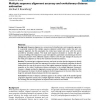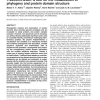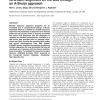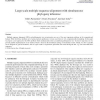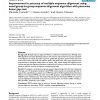128
click to vote
CANDC
2005
ACM
15 years 11 days ago
2005
ACM
We propose an algorithm of global multiple sequence alignment that is based on a measure of what we call information discrepancy. The algorithm follows a progressive alignment ite...
109
Voted
BMCBI
2005
15 years 11 days ago
2005
Background: Sequence alignment is a common tool in bioinformatics and comparative genomics. It is generally assumed that multiple sequence alignment yields better results than pai...
110
Voted
NAR
2006
15 years 13 days ago
2006
Phylogenetic analysis and examination of protein domains allow accurate genome annotation and are invaluable to study proteins and protein complex evolution. However, two sequence...
102
click to vote
NAR
2006
15 years 13 days ago
2006
Expresso is a multiple sequence alignment server that aligns sequences using structural information. The user only needs to provide sequences. The server runs BLAST to identify cl...
106
Voted
NAR
2006
15 years 13 days ago
2006
Multiple sequence alignment programs are an invaluable tool in computational biology. A-Bruijn Alignment (ABA) is a method for multiple sequence alignment that represents an align...
102
Voted
JPDC
2006
15 years 13 days ago
2006
Multiple sequence alignment (MSA) and phylogenetic tree reconstruction are one of the most important problems in the computational biology. While both these problems are of great ...
123
click to vote
BMCBI
2006
15 years 16 days ago
2006
Background: Multiple sequence alignment (MSA) is a useful tool in bioinformatics. Although many MSA algorithms have been developed, there is still room for improvement in accuracy...
111
click to vote
BMCBI
2006
15 years 16 days ago
2006
Background: Multiple sequence alignment is the foundation of many important applications in bioinformatics that aim at detecting functionally important regions, predicting protein...
BMCBI
2008
15 years 18 days ago
2008
Background: A multiple sequence alignment (MSA) generated for a protein can be used to characterise residues by means of a statistical analysis of single columns. In addition to t...
96
Voted
BMCBI
2007
15 years 18 days ago
2007
Background: By virtue of their shared ancestry, homologous sequences are similar in their structure and function. Consequently, multiple sequence alignments are routinely used to ...

